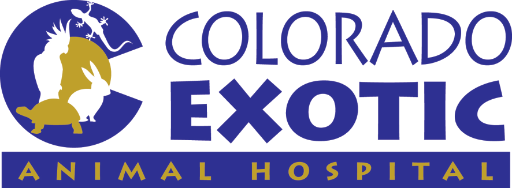Basic Care: Golden Greek Tortoise
Several species have been referred to as Golden Greek Tortoises, none actually originating from Greece at all. The two most commonly seen species in the pet trade are Testudo terrestris and Testudo floweri, the former probably being the most common of the two. The natural range of T. terrestris is Northern Iraq to Turkey and Syria whereas T. floweri has a far more limited natural range, found only along a narrow strip of land along the coasts of Israel and Lebanon and possibly as far west as Egypt in the Sinai.
Both species are found in moderate to hot arid climates and both may remain fairly active late into the winter, aestivating partially submerged into shallow pits or burrows, retreating for brumation only during the coldest times of the year.
The natural diet of both species is similar to that of other Greek tortoises (T. graeca) consisting of edible weeds, thistles and vegetative debris.
Special Characteristics:
Size: Maximum adult shell length of 7 inches for T. floweri and 11 inches for T. terrestris, males often being considerably smaller at maturity than females.
Captive Care Requirements:
Enclosure:
As with most tortoises, these do better when kept in outdoor enclosures, especially in warm, arid climates. However, caution should be taken in wet, humid areas of the country as these species are prone to issues with both respiratory disease and shell infections when kept too wet. Outdoor enclosures should be moderately sized for adults, at least 4'X4' is recommended.
When housing this species indoors use of a "tortoise table" or large storage tubs are recommended versus glass aquariums as these allow better ventilation and will prevent the tortoise from constantly trying to walk through the clear glass.
Substrate
For outdoor enclosures avoid gravel or sand as these may be ingested and result in impactions. For indoor enclosures I recommend cypress mulch or packed down organic top soil.
Temperature
These tortoises are fairly temperature tolerant and are observed being active outdoors as long as highs remain in the 70s, however little food should be offered with the lower temperatures. The preferred optimal temperature zone is between 85-95 degrees. Outdoors they will retreat into cooler burrows in hotter weather. Indoors, a basking heat lamp should be provided. Temperatures should always be monitored with a digital thermometer or infrared thermometer. Thermostats are also useful to assure temperatures remain fairly constant within the enclosure.
Lighting
Golden Greek tortoises require UVB lighting in order to process calcium properly. UVB lighting should be provided using either fluorescent (tube or "spiral" bulbs) or mercury vapor bulbs designed specifically for use in reptiles. When selecting fluorescent bulbs high output 10.0 bulbs are recommended as tortoises require fairly high levels of UVB exposure. It should be noted that these bulbs will stop providing UVB long before they stop producing visible light so they will need to be changed regularly, usually every 6 to 12 months depending on the manufacturer's recommendations. Place UVB lighting no greater than 12 inches from the basking site. Connecting it to a timer is recommended in order to provide approximately 14 hours of light and 10 hours of darkness. For more information of UVB lighting, click here.
Disinfection and Cleaning
Droppings should be removed as soon as possible. Disinfect the enclosure regularly using a mixture of 1 tablespoon bleach to 1 cup of water, make sure to rinse thoroughly after. Bowls should be disinfected at least weekly. Disinfect the entire habitat every 1 to 2 months again rinsing it thoroughly with water and allowing it to air out for at least an hour before returning your bearded dragon to the enclosure.
Diet/Water
Feed Daily/Staple - Shrubs, Weeds, Forbs, Alfalfa (plants), Cactus pad/leaf (prickly pear), Cactus pear (prickly pear), Collard greens, Dandelion greens, Endive, Escarole, Mustard Greens, Squash (acorn, butternut, hubbard, scallop, spaghetti, summer), and Turnip greens.
Feed Occasionally - Alfalfa sprouts, Apples, Apricots (fresh), Beans (garbanzo, green, kidney, lima, pinto), Bell peppers, Blackberries, Blueberries, Cabbage (red), Cantaloupe, Carrots (raw), Celery, Cherries (no pit), Cilantro, Clover, Cranberries (fresh), Cucumbers, Grape leaves, Grapefruit, Grapes, Honeydew melons, Nectarines, Oranges, Pea sprouts, Peaches, Pears, Pineapple, Prunes, Pumpkin (raw), Radish, Raisins, Kelp, Strawberries, Watermelon, Wheat grass (pet grass), and Yams (raw) .
Feed Rarely - Banana, Soybeans, Beet greens, Beets, Broccoli, Cauliflower, Corn, Egg (whole, hard boiled), Kiwi, Lettuce (red leaf, romaine), Olives (canned, pitted), Parsley, Peas, Pomegranate, Potato, Raspberries, Rice, Rutabaga, Brussels sprouts, Starfruit, Swiss chard, Tomato.
Do NOT feed - Meat, Insects, Bran, Bread, Cheerios, Chives, Eggplant, Garlic, Lettuce (loose leaf, iceberg), Mushrooms, Onion, Pasta, Spinach*, or Yogart
Juvenile tortoises (less than 2 years of age) also should be offered Mazuri LS pellets softened in water every 2-3 days to give them a small amount of protein and extra carbohydrates to help them build muscles and body condition.
Soak tortoises in shallow warm water for 15 minutes 2-3 times weekly to encourage drinking, urination, and defecation.

